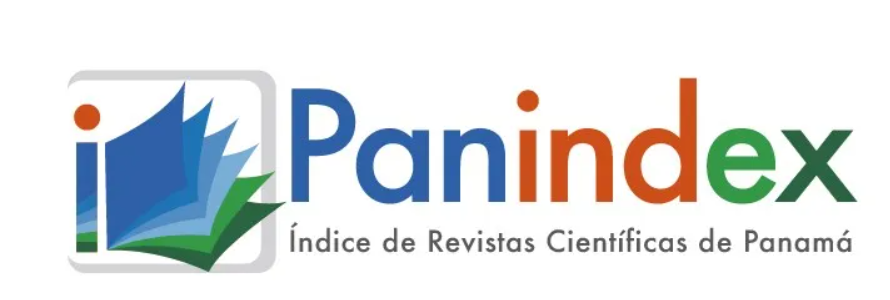The content of the publications and the links suggested in them are the sole responsibility of the authors and not of the METROPOLITAN UNIVERSITY OF EDUCATION, SCIENCE AND TECHNOLOGY (UMECIT) or CATHEDRA magazine. They are protected by international copyright laws just as the UMECIT and CATHEDRA logos, hence their reproduction is totally prohibited
This work is licensed under a Creative Commons Attribution-NonCommercial-NoDerivatives 4.0 International License.
The authors maintain the copyright and transfer the right of the first publication to the journal, with the article registered with Creative Commons Attribution-NonCommercial-NoDerivatives License, which allow others They can download the works published in this magazine and share them with other people, as long as their authorship is recognized, but they cannot be changed in any way nor can they be used commercially.
Authors are recommended to include their work in social networks such as Researchgate and institutional repositories once the article or visible fact has been published on the journal page, without forgetting to include the digital document identifier and the name of the journal.



Abstract
The work of a crime scene in Panama is not clear for the administration of justice and the society, that´s why is necessary to make a description of the crime scene investigator´s work, in a way that we can visualize the objectives that can be accomplish by making an inspection of the crime scene.The inspection of a crime scene can be very helpful for the investigation of a crime, because through the pictures we can record and collect information to make future decisions on the case. The inspection of the crime scene is the first scientific approach that is make in a case, that's why is important to know about it. Innovation and modernization attack all sectors and especially criminalistics that is constantly evolving, so it is significant to evaluate the processes and techniques that are applied to update them and improve the work that is carried out and, in this way, get better results.
Keywords
References
Carvajal Meza, N. T., & Sepúlveda Riaño, H. D. (2019). Universidad Libre de Colombia. Obtenido de Universidad Libre de Colombia: https://repository.unilibre.edu.co/ bitstream/handle/10901/15502/APLICABILIDAD%20DE%20LAS%20NORMAS%20 DE%20BIOSEGURIDAD%20POR%20PARTE%20DEL%20INVESTIGADOR%20 C RI MINAL %2 0E N% 20 E L %2 0L UGAR %2 0 DE %2 0 L OS%2 0 HE CHOS. pdf?sequence=1&isAllowed=y
Castro, D. d. (2016). Generalidades del Sistema Penal Acusatorio. Guía de Sistema Acusatorio. Panamá, Panamá, Panamá.
Constain Chávez, M., & Constain Medina, A. (1963). Investigación Criminal. Bogotá: Temis.
Dutelle, A. W. (2011). An Introduction to Crime Scene Investigation. Sdbury, Massachussets: Jones and Bartlett Publishers.
Esteller, G. M. (2014). La Inspección Ocular y su Relación con el Proceso Penal. Revista No. 4 Skopein-Criminalística y Ciencias Forenses, 6-12.
Fiscalia General de la República del Salvador. (s.f.). Manual de Procesamiento de la Escena del Delito. El Salvador: Talleres Gráficos UCA.
Guzmán, C. A. (2011). Manual de Criminalística. Buenos Aires, República de Argentina: Euros Editores S.R.L.
H Fox, R., & Cunningham, C. (1995). Manual para la investigación de la videncia Física y Requisa de la Escena del Crimen. Estados Unidos.
Hernandez, A. (s.f de s.f de s.f). Academia. Obtenido de Academia: https://www.academia'>https://www.academia. edu/6241296/Criminal%C3%ADstica_de_Campo_y_Laboratorio_I_TIPOLOGIA_DE_ LOS_LUGARES_DE_LOS_HECHOS
Hérnandez, E. (s.f.). Academia. Obtenido de Academia: https://www.academia'>https://www.academia. edu/34959302/Sistema_Penal_Acusatorio
IMELCF. (2014). Directorio de Servicios Periciales. Panamá.
La Estrella de Panamá. (1 de febrero de 2012). Obtenido de La Estrella de Panamá:https://www.laestrella.com.pa/opinion/redaccion-digital-la-estrella/120201/rol-perito-investigacion-criminalistico
León, H. P. (2009). La Investigación Criminal en el Sistema penal Acusatorio. Bogotá, Colombia: Editorial Leyer.
Locard, E. (1954). Manual de Técnica Policíaca. Barcelona: Editor José Montesó.
Luque, O. (1971). Elemento de la Criminalística. Bogotá, Colombia: Grupo Termis.
Ministerio Público. (2009). 100 preguntas del Sistema Penal Acusatorio. Panamá. Obtenido de Ministerio Público: https://ministeriopublico.gob.pa/sistema-penal-acusatorio/
Moreno, M. D. (2012). Criminalística Practica. Bogotá, Colombia: Editorial Temis, S.A.
Moreno, R. (1997). Introducción a Criminalística. México: Porrúa.
Moreno, R. (2011). Los indicios biológicos del delito. Mexico: Instituto Nacional de Ciencias Penales.
Muñoz, R. B. (2000). Criminalítica, Peritos y Peritajes. Revista de Derecho, Criminología y Ciencias Penales No. 2, 135-144.
Salvador, C. B. (s.f.). Academia. Obtenido de Academia: https://d1wqtxts1xzle7. cloudfront.net/44241356/criminalistica-lugar-hechos.pdf?1459388931=&response- content-disposition=inline%3B+filename%3DCRIMINALISTICA_MANUAL_ MANEJO_DEL_LUGAR_D.pdf&Expires=1596156083&Signature=McgO94zGBoGP dG-15c-QcqM6hrCA~6lWHB1Q0zIK
Suboch, G. (2016). Real World Crime Scene Investigation: A Step by Step Procedure Manual. Florida: CRC Press.
Downloads
Publication Facts
Reviewer profiles N/A
Author statements
- Academic society
- Universidad Metropolitana de Educación, Ciencia y Tecnología
- Publisher
- Universidad Metropolitana de Educación, Ciencia y Tecnología




















